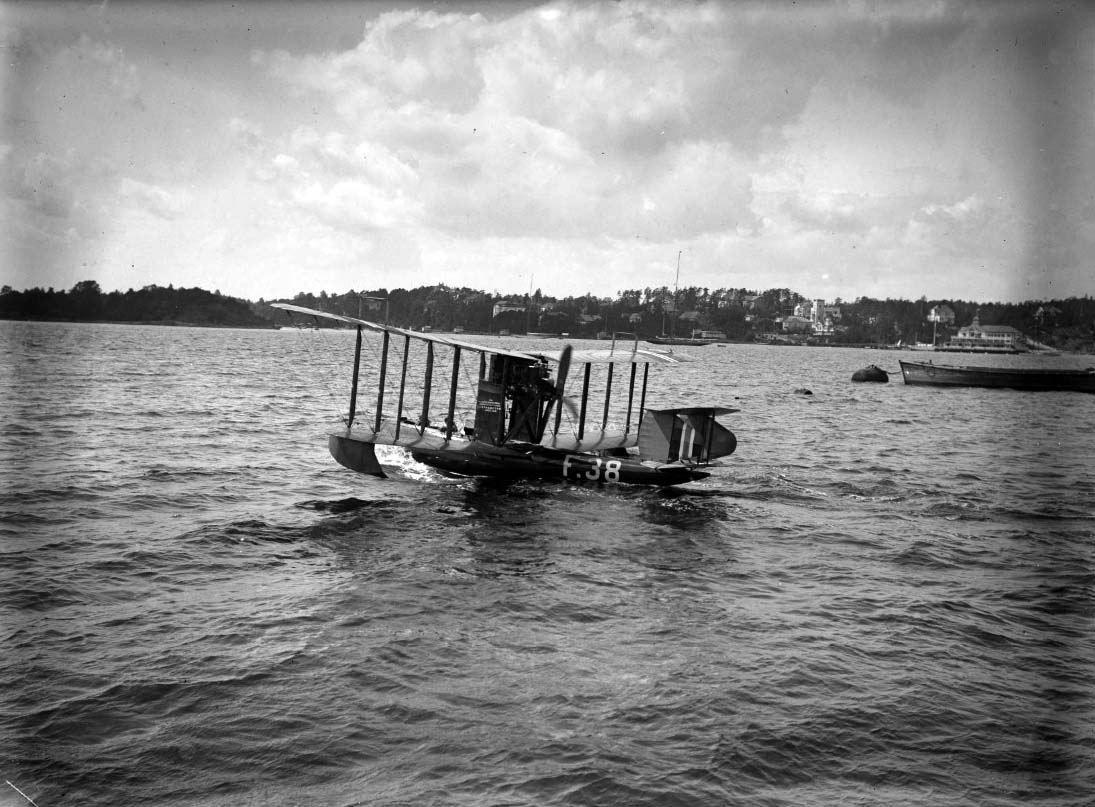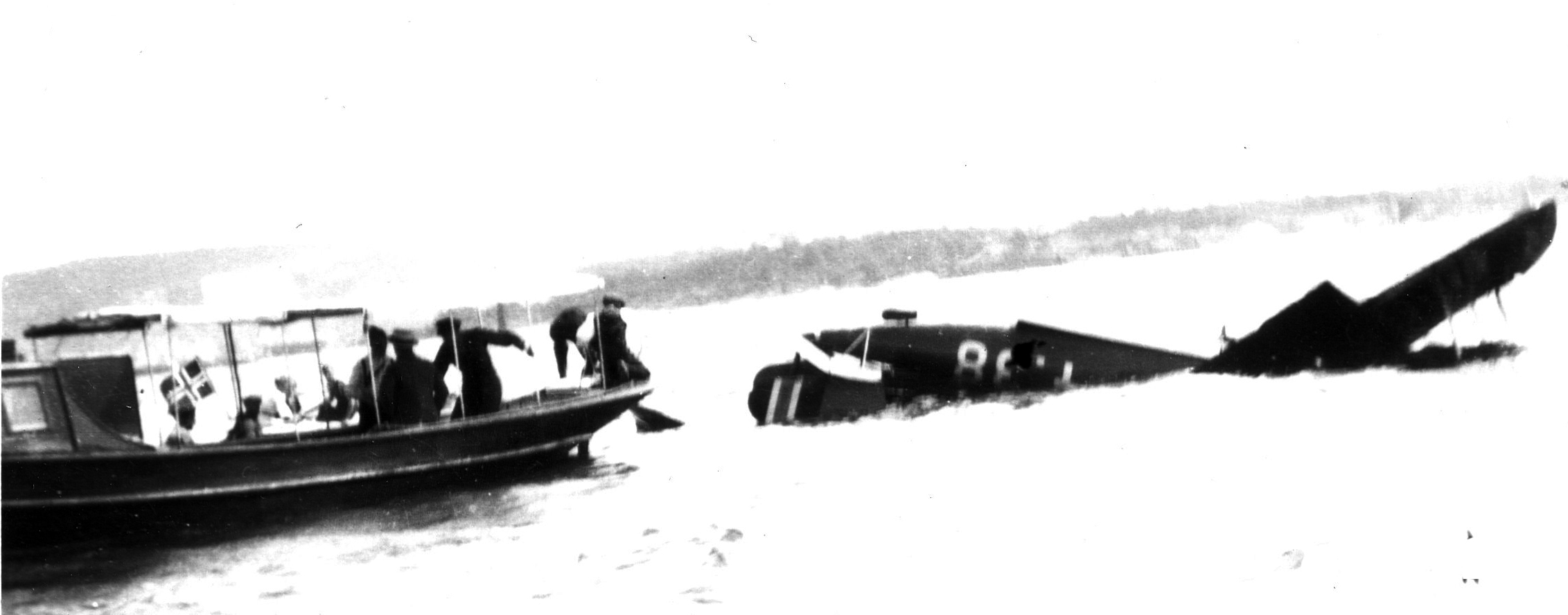
The Supermarine Channel of the Marinens Flyvåpen (Naval Royal Air Corps)seconds before it crashed! (Nasjonalbiblioteket)
On the first flight on 12 July 1920, Naval Ltn Sven Brun departed with Supermarine Channel I, F.38, from Horten and flew to Christiania. Here the mail was taken on board. Immediately after take-off from Christiania, the flying-boat crashed and was destroyed beyond repair. On board was the journalist Leif Sinding from the newspaper ‘Morgenbladet’ and he wrote a long article about the accident and how he experienced it. The accident was described as follows: ”When we boarded the ‘aeroplane’ the waves already hit the fuselage and Brun noted that with this headwind, it would take considerable time for us to get to Kristiansand’ … ‘I jumped into the cockpit, placed my briefcase and the borrowed camera and sat myself at the front seat of the flying-boat. A final look at the shore, where my wife stood to see me off. She waved with all her strength and I replied. We started. The machine speeded over the top of the waves. The waves hit the bow hard and gave me an unpleasant feeling. I could not avoid getting wet. I tried to hold on tight and thought: I wish we were in the air. But it lasted, and it seemed to me an eternity before I finally realized that I was floating. The waves under me became smaller and a sailing boat in front of me made me realize that we already were well above the boat’s mast. Then suddenly, the ‘aeroplane’ makes a big swing and I understood we were flying towards Brandskjæret where our photographer stood and waited with his camera. But what’s this? This swing was far too tight, I thought’ … ‘And before I know it, I feel a terrible blow and gone was the sky and the peaceful island of Bygdøy of which I only had a glimpse. I felt I was sinking. I had swallowed a good portion of water and I was aware of my situation. First, I thought: it’s over. I knew I was a lousy swimmer and did not believe I would be able to get in safely. However, I closed my mouth again and did my best to relax. Luckily, I was not strapped – had I been, I would not have a chance. I saw a rope in the water and that gave me some courage. After some effort, I emerged. It was all unbelievable. I clung to one of a buoy and thought, ‘is nobody helping us?!’ I did not trust my swimming capabilities and the heavy overcoat and the heavy clothes drew me down”. He was saved by the mechanic, who pulled him on to the bow, which floated upside down. Ltn Brun also made it out of the flying-boat. He had blood all over his face but was busy saving the passengers and mail. They were all picked up by a motor boat and taken ashore. His wife had witnessed the whole accident and was more than glad to see her husband safe. At home, his wife told him that this was his last flight. Leif Sinding wrote: ”But now lying here on the sofa, tugged in a warm blanket, I am not so sure it was the last flight …“ The flying-boat, however, was scrapped. Naval Ltn Sigurd Fougner Wiig in the F.40 was the back-up and flew from Horten to Christiania to take over the salvaged mail. From there, he flew to Horten, Arendal and Kristiansand without any problems.
Read more in the book: “The Beginnings of Norway’s Airlines, part 1, 1918-1922”

